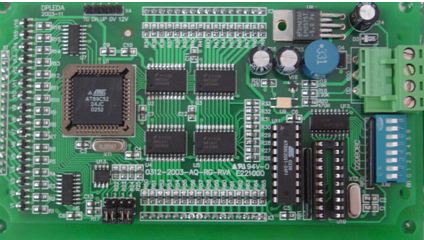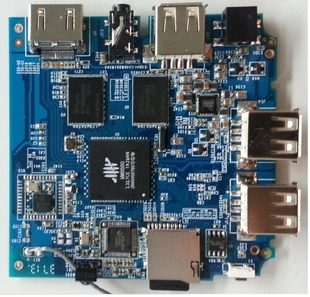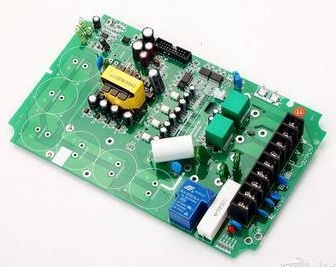
FPCB, also known as flexible printed circuit board, is also referred to as "soft board", which forms a sharp contrast between soft and hard material characteristics with hard and inflexible PCBs or HDIs. In today's electronic product design, FPCB has become a very common mixed use flexibility of soft and hard. This paper will discuss the "soft" characteristics of "soft board" from the perspective of materials, manufacturing processes and key components, At the same time, the use limit of soft board is explained.
Material characteristics of flexible FPCB

In addition to soft materials, flexible FPCB products have light texture and extremely thin/light structure. The materials can be flexed for many times without breaking the insulation materials of hard PCBs. The flexible plastic substrate and wire layout of flexible boards make it impossible for flexible boards to cope with excessive conduction current and voltage. Therefore, in high-power electronic circuit applications, soft board design is almost invisible, but in small current For low-power consumer electronic products, the use of soft boards is quite large.
Because the cost of the soft board is still controlled by the key material PI, the unit cost is high. Therefore, when designing PCB products, the soft board is usually not used as the main carrier, but the key design that requires "soft" characteristics is applied locally, such as the soft board application of the electronic zoom lens head of the digital camera, or the soft board material of the electronic circuit of the optical drive reader head, because the electronic components or functional modules must move An example of implementing soft board circuit design when the hard circuit board materials cannot be matched.
In the early days, it was mainly used for aerospace and military purposes. Now, it is widely used in consumer electronics applications
In the 1960s, the use of soft board was quite common. At that time, the unit price of finished soft board was high. Although it was light, flexible, and thin, the unit cost was still high. At that time, it was only used for high-tech, aerospace, and military purposes. In the late 1990s, soft boards began to be widely used in consumer electronic products. Before and after 2000, soft circuit boards were mainly produced in the United States and Japan. The cost of soft circuit boards remained high because soft board materials were under the control of major suppliers in the United States and Japan, plus material restrictions.
PI, also known as "polyimide", can be divided into full aromatic PI, semi aromatic PI and other different structures in terms of its heat resistance and molecular structure. The full aromatic PI belongs to the straight chain type, and the materials have non fusible and non fusible thermoplastic substances. The properties of non fusible materials cannot be molded by injection during production, but the materials can be compressed and sintered, while the other can be produced by injection molding.
Semi aromatic PI belongs to this kind of material in Polyetherimide. Polyetherimide is generally thermoplastic and can be manufactured by injection molding. As for the thermosetting PI, different raw material characteristics can be used for lamination forming, compression forming, or recursive die forming of the impregnated materials.
FPCB board raw material has high heat resistance and stability
In terms of the final formed products of chemical materials, PI can be used as gaskets, lining rings and sealing materials, while bismale type materials can be used as the base materials of soft plate multilayer circuit substrates, and all aromatic materials. Among the organic polymer materials in use, PI is the material with the highest heat resistance, and the heat resistance temperature can reach 250~360 ° C! As for the bismale type PI used as a flexible circuit board, its heat resistance is slightly lower than that of the full aromatic PI, which is generally about 200 ° C.
Bismale type PI has excellent mechanical material properties, is subject to extremely low temperature changes, and can also maintain a highly stable state at high temperatures, with minimal creep deformation and low thermal expansion rate! In the temperature range of - 200~+250 ° C, the change of the material is small. In addition, bismale type PI has excellent drug resistance. If 5% hydrochloric acid is used for impregnation at 99 ° C, the tensile strength retention rate of the material can still be maintained to a certain extent. In addition, the friction and wear characteristics of bismale PI are also extremely superior. It can also have a certain degree of wear resistance when used in applications prone to wear.
In addition to the main material characteristics, the structural composition of the FPCB substrate is also a key factor. The FPCB is a covering film (upper layer) as the insulation and protection material, which is combined with the insulation substrate, calendered copper foil and adhesive to form an integral FPCB. The base plate material of FPCB has insulating properties. Generally, two materials, polyester (PET) and polyimide (PI), have their advantages/disadvantages.
FPCB fabrication materials and procedures improve terminal flexibility
FPCB has many uses in products, but basically it is no more than lead wire, printed circuit, connector and multi-functional integration system. According to the function, it can be divided into space design, shape change, folding and flexure design, and FPCB design can be used to prevent electrostatic interference of electronic equipment. When using flexible circuit boards, if the cost is not considered and the product quality is directly constructed on the soft board, not only the design volume is relatively reduced, but also the overall product volume can be greatly reduced due to the characteristics of the board.
The base plate structure of FPCB is quite simple. It mainly consists of the upper protective layer and the middle conductor layer. During mass production, soft particle road boards can be matched with positioning holes for production program alignment and post-processing. As for the use mode of FPCB, the shape of the board can be changed according to the space needs, or it can be used in the form of folding. As long as the multi-layer structure adopts anti EMI and electrostatic barrier design forms in the outer layer, the flexible circuit board can also improve the design of efficient EMI problems.
On the key circuit board, the uppermost structure of FPCB is copper, including RA (Rolled Annealed Copper), ED (Electrodeposited), etc. The manufacturing cost of ED copper is quite low, but the material is easy to break or fault. RA (Rolled Annexed Copper) has higher production cost, but its flexibility is better. Therefore, most of the flexible circuit boards used in high deflection state are made of RA materials.
As for the forming of FPCB, the covering layer, calendered copper and base material of different layers need to be bonded through adhesives. Generally, the adhesives used are mainly acrylic and Mo Epoxy. The heat resistance of epoxy resin is lower than acrylic, and it is mainly used for household products. Although acrylic has advantages of high heat resistance and high bonding strength, its insulation and electrical properties are poor, In the FPCB fabrication structure, the thickness of the adhesive accounts for 20~40% of the overall thickness μ M (microns).
Reinforcement and integrated design can be used to improve material performance for high deflection applications
In the FPCB manufacturing process, the copper foil and substrate will be fabricated first, and then the perforation and electroplating operations will be carried out after the truncation treatment. The photoresist material coating treatment will be carried out roughly after the FPCB hole position is pre completed. After the coating is completed, the FPCB exposure development program will be carried out, and the lines to be etched will be treated in advance. After the exposure development treatment, the solvent etching operation will be carried out. At this time, the etching will be carried out to a certain extent to shape the conductive lines, The surface is cleaned to remove solvent. At this time, the adhesive is used to evenly coat the FPCB base layer and the etched copper foil surface, and then the coating is stuck.
After completing the above operations, the FPCB has achieved approximately 80% completion. At this time, we also need to deal with the connection points of the FPCB, such as increasing the lead welding treatment of the opening, and then carry out the appearance processing of the FPCB. For example, if the FPCB is a soft and hard composite plate or needs to be welded with the functional module after cutting a specific appearance with a laser, the secondary processing processing will be carried out at this time, or the processing design of the reinforcement plate will be matched.
FPCB has many uses and is not difficult to make. FPCB itself cannot make too complicated and compact circuits, because too thin circuits will easily break the internal PCB circuit if the section area of copper foil is too small when the FPCB is flexed. Therefore, too complicated circuits will mostly use the core HDI high-density multilayer board to process the relevant circuit needs, and only a large number of data transmission interfaces Or data I/O transmission connection of different function carrier plates, FPCB will be used for plate connection.







